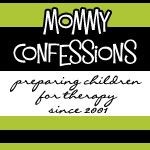When Willow started driving, no one was happier about it than I. Primarily it meant that after 11 years, I no longer had to drive a carpool filled with smelly shin guards and crusty socks to and from soccer practice.
A month later she tore her ACL, and after surgery, I was back to being her chauffeur. I wasn’t taking her to soccer practice twice a week, however. I was taking her to physical therapy.
We chose John Woolf of ProActive Physical Therapy, as he came highly recommended by our surgeon, Dr. Tucker, as well as by trusted and knowledgeable friends.
“Talk to my husband,” said my good pal and fellow soccer mom, Stephanie Hunley, when I asked her if she had a therapist to recommend. “He’s got people.”
LaMonte Hunley, one of the men who carried Willow off the field on that dreadful day, is a low-key, yet loyal soccer dad. A former NFL player with the Indianapolis Colts and a U of A Wildcat, he doesn’t say much to or about the girls and the game, but when he does make a comment, in my never-humble opinion, he’s always spot on with his observations.
 |
| LaMonte Hunley |
“Woolf,” he said, almost like a bark.
“Did you say wolf? Like the canis species? A howling, doglike wolf?”
“Yeah, that’s right,” said LaMonte. “He’s the one. Used to be the trainer at the U of A.”
“Did you say wolf? Like the canis species? A howling, doglike wolf?”
“Yeah, that’s right,” said LaMonte. “He’s the one. Used to be the trainer at the U of A.”
I immediately looked up Mr. Woolf and discovered he’s the former Director of Sports Medicine for The University of Arizona where he coordinated rehabilitation and medical coverage for division I athletes. Today he is the owner of ProActive Physical Therapy, located about a half hour from our eastside home. And it turned out, he was available to see Willow twice a week for the remainder of her time in Tucson this Spring.
 |
| John Woolf |
Prior to meeting him, Willow’s friend, Anna, a teammate who has been back on the soccer field for over a year after ACL reconstruction surgery, told her that John was her physical therapist, too. And she said in no uncertain terms that he was “the best.”
“He deals with what’s up here,” she said pointing to her temple,” As well as what’s down here.” And she pointed to her knee.
I didn’t fully grasp what Anna meant until I watched John in action. My view from a very different sideline made me believe from the first session that we had chosen the right physical therapist for Willow. He not only brings excellent credentials and experience to the rehab table, but he’s also the father of a teenage girl.
“What color is the pain?” he asked Willow. “And what shape does it have?” As he worked with her knee, he asked a series of questions like this that obviously had a positive affect on Willow. Nevertheless, I think he had her at hello.
And so, I adjusted my driving route and my routine, and found that being at physical therapy during those first few sessions wasn’t that much different than being at soccer practice. My daughter was involved in an activity while I engaged in conversation with one of my long-time friends and fellow soccer mom, whose daughter was also working out with her therapist after ACL reconstruction surgery. (In the circle in which we travel, ACL tears are a BIG injury in a SMALL town).
I had only just begun to grasp the depth of the emotional impact of this injury, and will write more about that soon. But after a little more than two weeks post-op, when Willow begged me to let her drive again, I was nervous about letting her and therefore, reluctant.
Ultimately I hoped that in conjunction with the physical therapy, a little motor vehicle therapy might go a long way in healing her hurt that day. Therefore, I handed her the keys and watched as her face lit up with a smile I hadn’t seen in a very long time.
Ultimately I hoped that in conjunction with the physical therapy, a little motor vehicle therapy might go a long way in healing her hurt that day. Therefore, I handed her the keys and watched as her face lit up with a smile I hadn’t seen in a very long time.
“Score!” she said and practically skipped out the door.



































